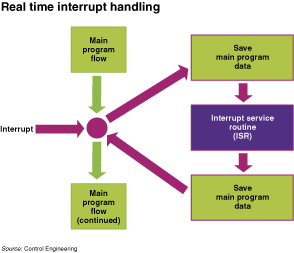Multicore microcontrollers and software virtualization make the impossible possible for real-time control applications.
Not long ago控制工程网版权所有, building a digital control system for a real-time application was relatively simple. You started with whatever real-time operating system (RTOS) you were most enamored with, selected a microcontroller that was 1) supported by that RTOS控制工程网版权所有, and 2) had price, performance, I/O features, and memory that met your application needs. Then, you wrote application software
It’s not that simplewww.cechina.cn, anymore. In a sense, multicore microcontroller technology and software virtualization make the embedded system and motion-control design engineer’s job more complex. In many ways, however, they make the job easier. Getting to the bottom of this paradox requires a basic understanding of RTOS控制工程网版权所有, multicoreCONTROL ENGINEERING China版权所有, and virtualization. Let’s start with basic RTOS technology.

Real time operating systems live and die by handling interrupts. When an interrupt arrives, the RTOS must store data pertaining to the program it has been running, switch to a separate interrupt service routine to deal with the event, then pick up the stored data before resuming the former program.
On time, every time
Wikipedia says that:
“A real-time operating system (RTOS; generally pronounced as “are-toss”) is a multitasking operating system intended for real-time applications. … An RTOS facilitates the creation of a real-time system, but does not guarantee the final result will be real-time; this requires correct development of the software. … An RTOS is valued more for how quickly and/or predictably it can respond to a particular event than for the given amount of work it can perform over time. Key factors in an RTOS are therefore a minimal interrupt latency and a minimal thread switching latency.”
An RTOS makes it possible to program


 在线会议
在线会议 论坛
论坛 专题
专题 工控直播
工控直播 新闻中心
新闻中心 子站
子站 技术
技术 社区
社区



 IDEC HR8S系列新一代安全继电器有奖试用活动
IDEC HR8S系列新一代安全继电器有奖试用活动 2025(第二十一届)年度最佳产品奖有奖投票中
2025(第二十一届)年度最佳产品奖有奖投票中 AVEVA剑维软件食品饮料行业白皮书有奖下载
AVEVA剑维软件食品饮料行业白皮书有奖下载 立即有奖下载TE重载连接器选型指南
立即有奖下载TE重载连接器选型指南 2025(第十四届)全球自动化和制造主题峰会
2025(第十四届)全球自动化和制造主题峰会































